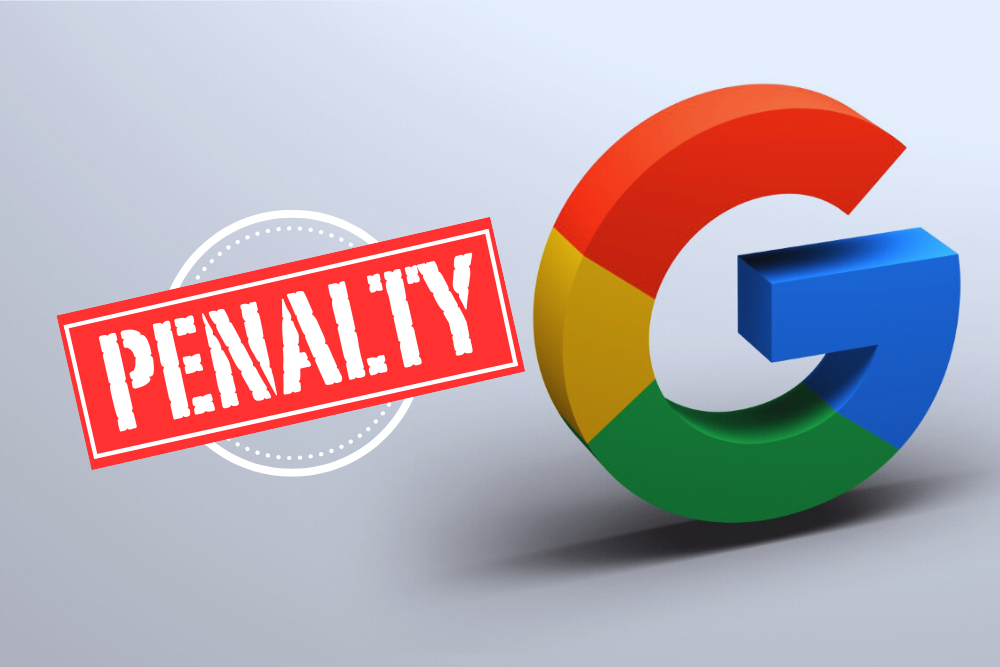Google’s algorithm is like a perfectionist matchmaker, pairing users with the best and most relevant content. When a website violates Google’s Webmaster Guidelines, it risks receiving a penalty, which can significantly impact its search engine visibility and organic traffic. These penalties can range from a simple ranking demotion to complete removal from Google’s index.
If you’re running an online business or creating content, knowing what triggers these penalties is a must. Avoid the common SEO mistakes, clean up your site, and stick to best practices. We’ll explore the SEO mistakes leading to penalties and potential fixes!
Common SEO Mistakes that Lead to Google Penalties
Google’s algorithms are constantly evolving, and the search engine giant regularly updates its guidelines to maintain the integrity of its search results. While some SEO mistakes may seem minor, they can have severe consequences if left unchecked. Here are some of the most common SEO mistakes that can lead to Google penalties:
- Keyword Stuffing
- Duplicate Content
- Buying or Exchanging Links
- Thin or Low-Quality Content
- Cloaking and Sneaky Redirects
- Hidden Text or Links
- User-Generated Spam
- Hacked Website
- Doorways
By understanding these mistakes and their potential impact, you can take proactive steps to avoid them and maintain a strong, penalty-free online presence.
Keyword Stuffing
Mistakes:
- Overusing keywords in your content, meta tags, and other on-page elements.
- Repeating keywords unnecessarily or in an unnatural way.
- Creating content exclusively for keyword stuffing.
Possible Fixes:
- Conduct a Content Audit: Analyze your website’s content and identify instances of keyword stuffing. Remove or rewrite any content that violates Google’s guidelines.
- Focus on Quality Content: Create high-quality, informative, and engaging content that provides value to your readers. Use keywords naturally and in moderation.
- Optimize Meta Tags: Ensure your meta tags (title, description, and keywords) accurately represent the content on each page and avoid keyword stuffing.
- Implement Structured Data: Use structured data markup to help search engines better understand the content on your pages.
Duplicate Content
Mistakes:
- Publishing the same content across multiple pages or websites.
- Scraping or copying content from other sources without proper attribution.
- Failing to implement canonical URLs or other duplicate content management strategies.
Possible Fixes:
- Conduct a Duplicate Content Audit: Use tools like Copyscape or Siteliner to identify instances of duplicate content on your website.
- Implement Canonical URLs: If you have multiple versions of the same content (e.g., www and non-www versions), use canonical URLs to specify the preferred version to search engines.
- Use Rel=”Canonical”: For duplicate content across different domains, use the rel=”canonical” tag to indicate the source.
- Noindex, Follow: If you have duplicate content that cannot be removed or consolidated, use the “noindex, follow” meta tag to prevent it from being indexed while allowing search engines to follow the links.
- Create Unique Content: Invest in creating high-quality, original content that provides value to your audience and avoids duplication.
Buying or Exchanging Links
Mistakes:
- Participating in link schemes or link networks.
- Buying or exchanging links solely for the purpose of manipulating search engine rankings.
- Engaging in excessive link exchanges or reciprocal linking.
Possible Fixes:
- Conduct a Link Audit: Use tools like Ahrefs, Majestic, or Moz to analyze your website’s backlink profile and identify any potentially harmful or unnatural links.
- Disavow Spammy Links: If you discover spammy or low-quality links pointing to your website, use Google’s Disavow Tool to disassociate your site from those links.
- Focus on Earning Natural Links: Instead of buying or exchanging links, concentrate on creating high-quality content and building relationships with other websites in your industry to earn natural, editorial links.
- Implement a Nofollow Policy: Use the “nofollow” attribute on any paid or sponsored links to prevent search engines from considering them as endorsements.
- Monitor and Remove Unnatural Links: Regularly monitor your website’s backlink profile and take action to remove or disavow any unnatural or spammy links.
Thin or Low-Quality Content
Mistakes:
- Publishing content that lacks substance, depth, or value.
- Creating pages with minimal or duplicated content.
- Failing to provide a satisfactory user experience.
Possible Fixes:
- Conduct a Content Audit: Evaluate your website’s content and identify pages or sections that may be considered thin or low-quality.
- Enhance Existing Content: Expand upon existing content by adding more depth, details, and valuable information to improve its quality and usefulness.
- Create Comprehensive Content: Develop in-depth, informative content that thoroughly covers a topic and provides genuine value to your audience.
- Optimize for User Experience: Ensure your content is well-structured, easy to read, and visually appealing, with appropriate use of headings, formatting, and multimedia elements.
- Encourage User Engagement: Incorporate features that encourage user engagement, such as comment sections, social sharing buttons, and related content recommendations.
Cloaking and Sneaky Redirects
Mistakes:
- Displaying different content to search engines than to human users (cloaking).
- Implementing sneaky redirects that send users to unintended or irrelevant destinations.
Possible Fixes:
- Audit Your Website: Thoroughly review your website’s code and functionality to identify any instances of cloaking or sneaky redirects.
- Implement Consistent Content: Ensure that the content displayed to search engines and users is consistent and accurately represents your website’s offerings.
- Avoid Deceptive Tactics: Refrain from using any tactics that attempt to deceive search engines or users, as these practices violate Google’s guidelines.
- Monitor for Unauthorized Changes: Regularly check your website for any unauthorized changes or modifications that may have introduced cloaking or sneaky redirects.
- Implement Secure Hosting: Use secure hosting and maintain robust security measures to prevent your website from being compromised and used for cloaking or redirects.
Hidden Text or Links
Mistakes:
- Using hidden or invisible text or links on your website.
- Employing techniques like tiny fonts or camouflaged text to conceal content from users.
Possible Fixes:
- Conduct a Visual Inspection: Carefully review your website’s pages to identify any instances of hidden text or links.
- Remove Hidden Content: If you find hidden text or links, remove them immediately, as they violate Google’s guidelines and can result in penalties.
- Implement Accessible Design: Ensure your website’s content is accessible and visible to all users, including those with disabilities or using assistive technologies.
- Avoid Deceptive Practices: Refrain from using any techniques that attempt to manipulate search engine rankings or deceive users.
- Encourage Transparency: Promote transparency and openness in your website’s design and content, adhering to best practices for user experience and accessibility.
User-Generated Spam
Mistakes:
- Allowing spammers to post low-quality or irrelevant content on your website.
- Failing to moderate user-generated content effectively.
- Enabling spammy or malicious user behaviour.
Possible Fixes:
- Implement Content Moderation: Establish a robust content moderation system to review and approve user-generated content before it goes live on your website.
- Use Spam Filters: Implement spam filters and captcha systems to prevent automated spam submissions and protect your website from abuse.
- Encourage Quality Contributions: Clearly communicate guidelines and expectations for user-generated content, encouraging high-quality, relevant contributions.
- Monitor and Remove Spam: Regularly monitor your website for spammy or low-quality user-generated content and remove it promptly.
- Limit Posting Privileges: Consider implementing user authentication or limiting posting privileges to trusted users or contributors.
Hacked Website
Mistakes:
- Failing to keep your website’s software and plugins up-to-date.
- Using weak or easily guessable passwords.
- Lacking proper security measures and backups.
Possible Fixes:
- Update Software and Plugins: Regularly update your website’s software, content management system (CMS), and plugins to ensure you have the latest security patches and fixes.
- Implement Strong Passwords: Use strong, unique passwords for all your website’s accounts and encourage users to do the same.
- Enable Two-Factor Authentication: Implement two-factor authentication (2FA) for an additional layer of security on your website’s admin accounts.
- Conduct Regular Backups: Maintain regular backups of your website’s files and database to facilitate recovery in case of a security breach or hack.
- Monitor for Suspicious Activity: Use website monitoring tools and regularly review your website’s logs for any signs of suspicious activity or unauthorized access attempts.
- Hire Professional Security Services: Consider hiring professional security services or consultants to conduct a comprehensive security audit and implement robust security measures for your website.
Doorways
Mistakes:
- Creating multiple pages with minimal or duplicated content.
- Using doorway pages to funnel users to a specific destination.
- Employing tactics like cloaking or sneaky redirects on doorway pages.
Possible Fixes:
- Identify and Remove Doorway Pages: Conduct a thorough audit of your website to identify and remove any doorway pages or pages with minimal or duplicated content.
- Focus on Quality Content: Instead of creating doorway pages, concentrate on developing high-quality, informative, and unique content that provides value to your users.
- Implement Proper Navigation: Ensure your website has a clear and intuitive navigation structure that allows users to easily find the content they’re looking for.
- Avoid Deceptive Tactics: Refrain from using tactics like cloaking, sneaky redirects, or any other deceptive practices that violate Google’s guidelines.
- Monitor for Unauthorized Changes: Regularly monitor your website for any unauthorized changes or additions that may introduce doorway pages or similar tactics.
To summarize, avoiding Google penalties is crucial for maintaining a strong online presence and ensuring your website’s visibility in search engine results. By understanding the common SEO mistakes that can lead to penalties and implementing the appropriate fixes, you can protect your website from potential penalties and maintain a positive relationship with Google. By adhering to Google’s Webmaster Guidelines and following best practices, you can build a sustainable, penalty-free online presence that attracts and retains valuable organic traffic.




